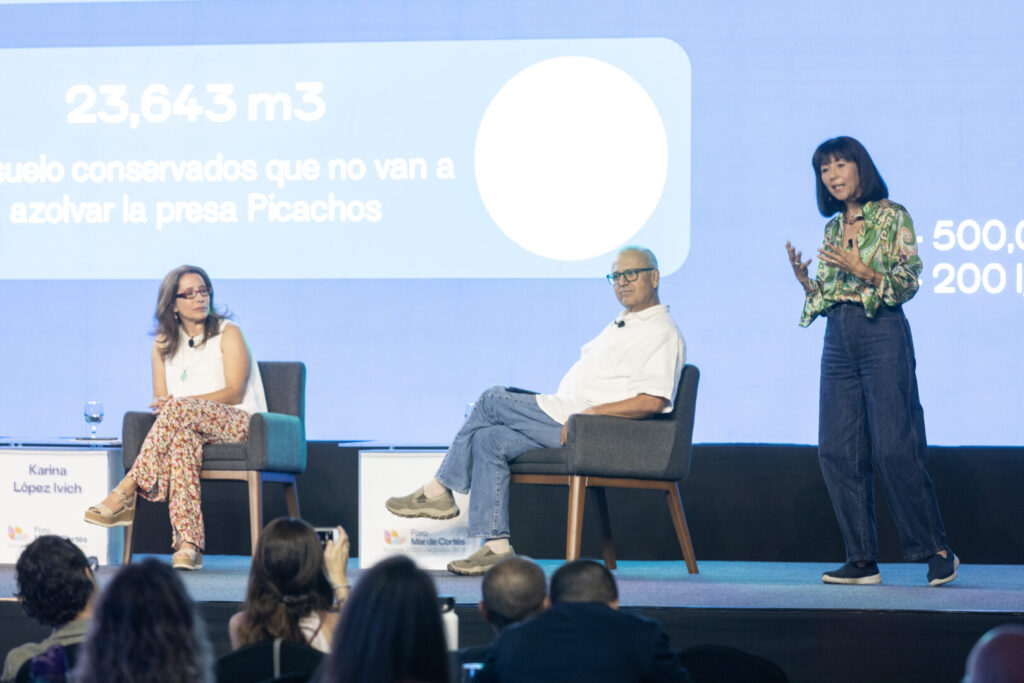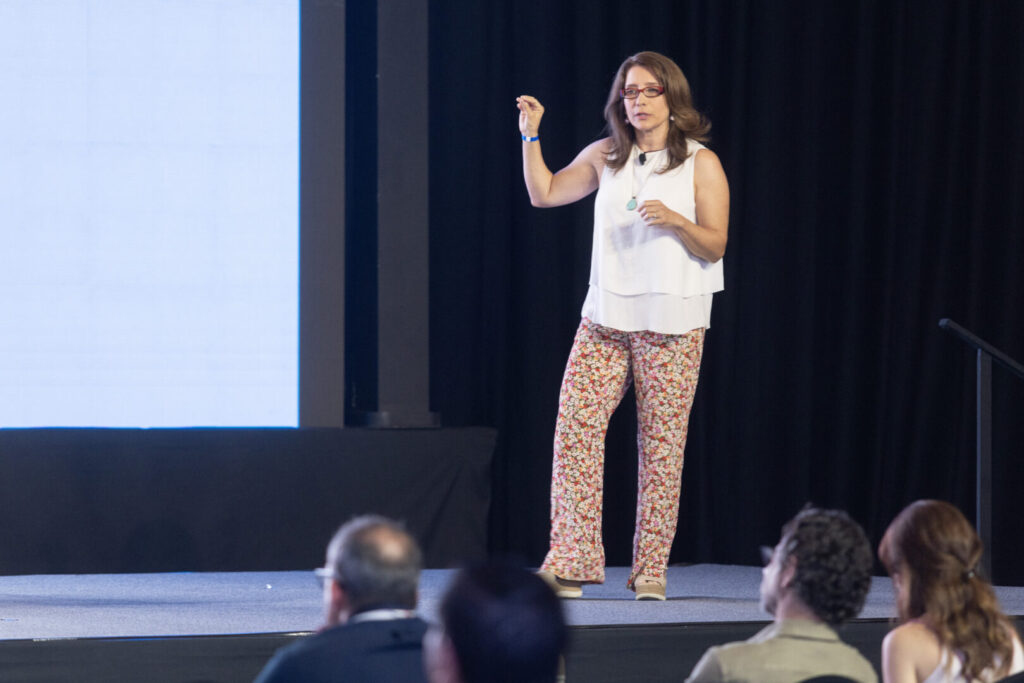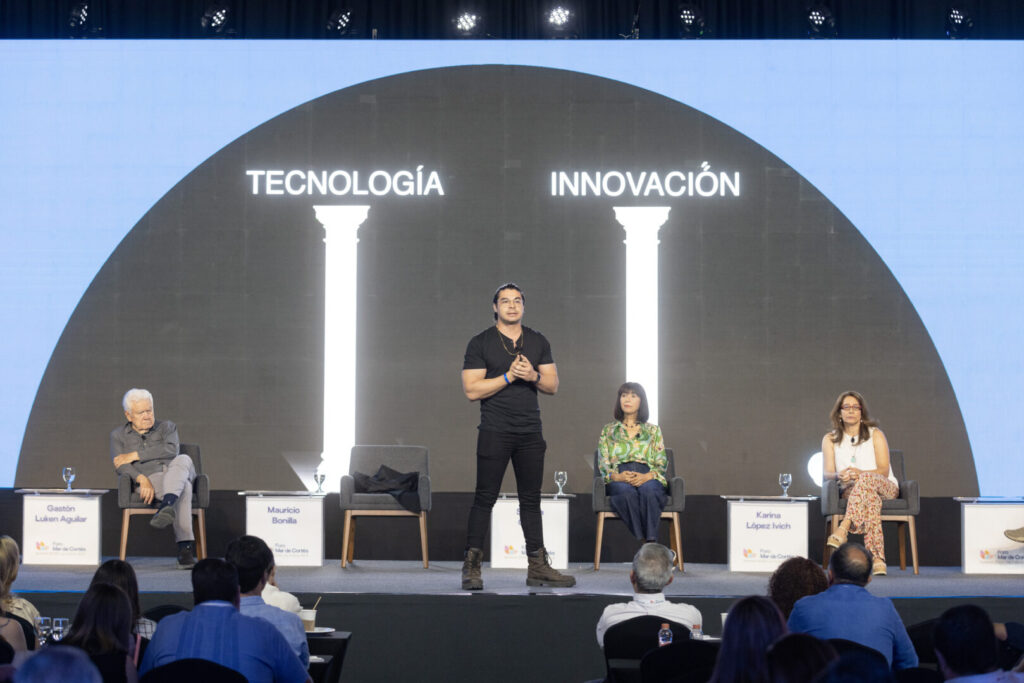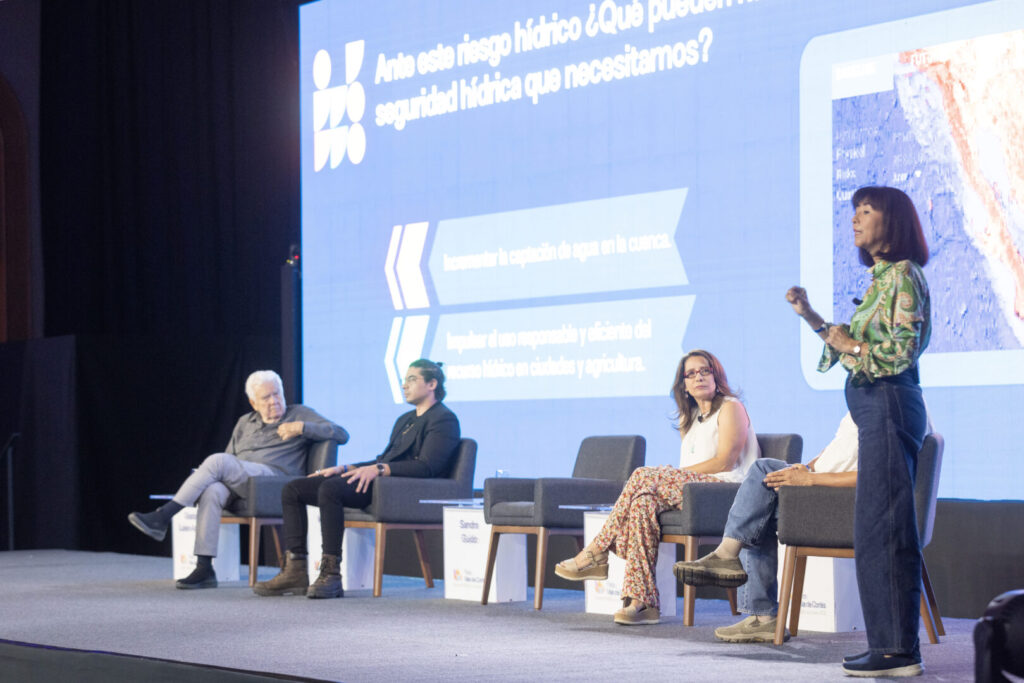The states that make up the Sea of Cortés Region currently suffer from the water scarcitybut experts in the field presented at the Summit 2022 Mission Prosperity alternatives to address this problem and convert the hydric stress in water prosperity.
In the panel Prosperity and Water Stress in the Sea of Cortez Region, Karina López IvichPresident of Inspiring Action for a Better World; Sandra Guidoof Conselva Costas y Comunidades; Mauricio Bonilla Serranofrom Innovaqua; and Mr. Gastón Luken AguilarThe participants, from Pronatura Noroeste, discussed this problem that is having an impact on the region's well-being.
Guido, who has worked on water issues at the southern SinaloaThe company said that society is not actively participating in decisions on the use and management of this input.
"Availability is the most important limiting factor for the prosperity of this region, we have a serious problem here. To address the water risk we are in, what can we do, increase water catchment in the basin and promote the responsible and efficient use of water resources in both cities and agriculture," he said.

Having vegetated soils in the watershed is the only green infrastructure on the planet that can convert rainfall into rivers and aquifers, he stressed, so it is necessary to restore, conserve and make strategic management and sustainable use of the watershed.
"We need to be responsible in the water issue and generate financial mechanisms that will allow us a constant investment to ensure that we will have water in the future," he said.
Karina Lopez Ivich, who has studied the watersheds of SonoraHe stated that the region has to make progress in a decade in food security and urban resilience, water security and energy autonomy.
The regenerative agricultureHe said it helps not only in carbon sequestration and having a more organic soil, without contaminating the soil and water, but also in the recharge of aquifers.
"Recharging the aquifers with solutions based on nature brings many more benefits that in the long term will leave us with a more alive, cleaner, healthier ecosystem, which in the end is what sustains our survival and this is economically and socially sustainable in the medium term," he said.

The activist spoke out against desalination projects to address the problem of drought, because it generates negative repercussions.
"Desalination plants are being talked about as an option to have water in Hermosillo, yes, they will bring more water, but at what cost and with what effects. In the case of Hermosillo, the cost, and this is a figure I take from studies that have already been done, if we were to bring water from the desalination plants that are being proposed, it would be three times the cost we have today to extract water from the wells or to bring water from the Independencia aqueduct," he said.
Disadvantages of desalination plants:
- Lack of institutional capacity to operate this type of system
- Lack of economic capacity
- Lack of technical capacity
- Price increase
- Social impact
Among the effects of desalination plants, he highlighted the negative impact on plankton and the biological production chain.
"If we are talking in this Forum that we want development with economic prosperity, with environmental wellbeing and social wellbeing, the characteristics that a desalination plant has do not meet those parameters," he considered.
Lopez Ivich proposed as solutions to increase metering to 90%, improve distribution infrastructure, improve water reuse to 100%, rainwater harvesting and collection and reuse of free water.
For his part, Mauricio Bonilla, founder of Innovaquaa company that invented NUBE, a device that produces water from the air through condensation, explained that this is a viable alternative because the higher the temperature, the more water the air can hold.
"If we are in global warming and it is getting warmer, then there is more water in the air, but we are not taking advantage of it, we are doing projects such as desalination, we are extracting more from the aquifer and we are not turning it up, the solution is in the air," he stressed.

He explained that there are 12,900 cubic kilometers of water in the atmosphere, which is three times the annual global consumption, so we must take advantage of this humidity before the wind carries it away.
Mr. Gastón Luken emphasized that there is mismanagement and misuse of water, so his proposal is for the communities to manage their own water.
"There are three models that I would like to see enabled: public, private and mixed, it is not that I am privatizing water, it is that I am handing over water management to the most competent hands, the community must decide," he said.
The honorary president of Pronatura Noroeste stated that it is urgent to improve water use, that the municipalities establish that all developments install reuse infrastructure and attack the problem of the pipelines through which high volumes of the vital liquid are wasted.


